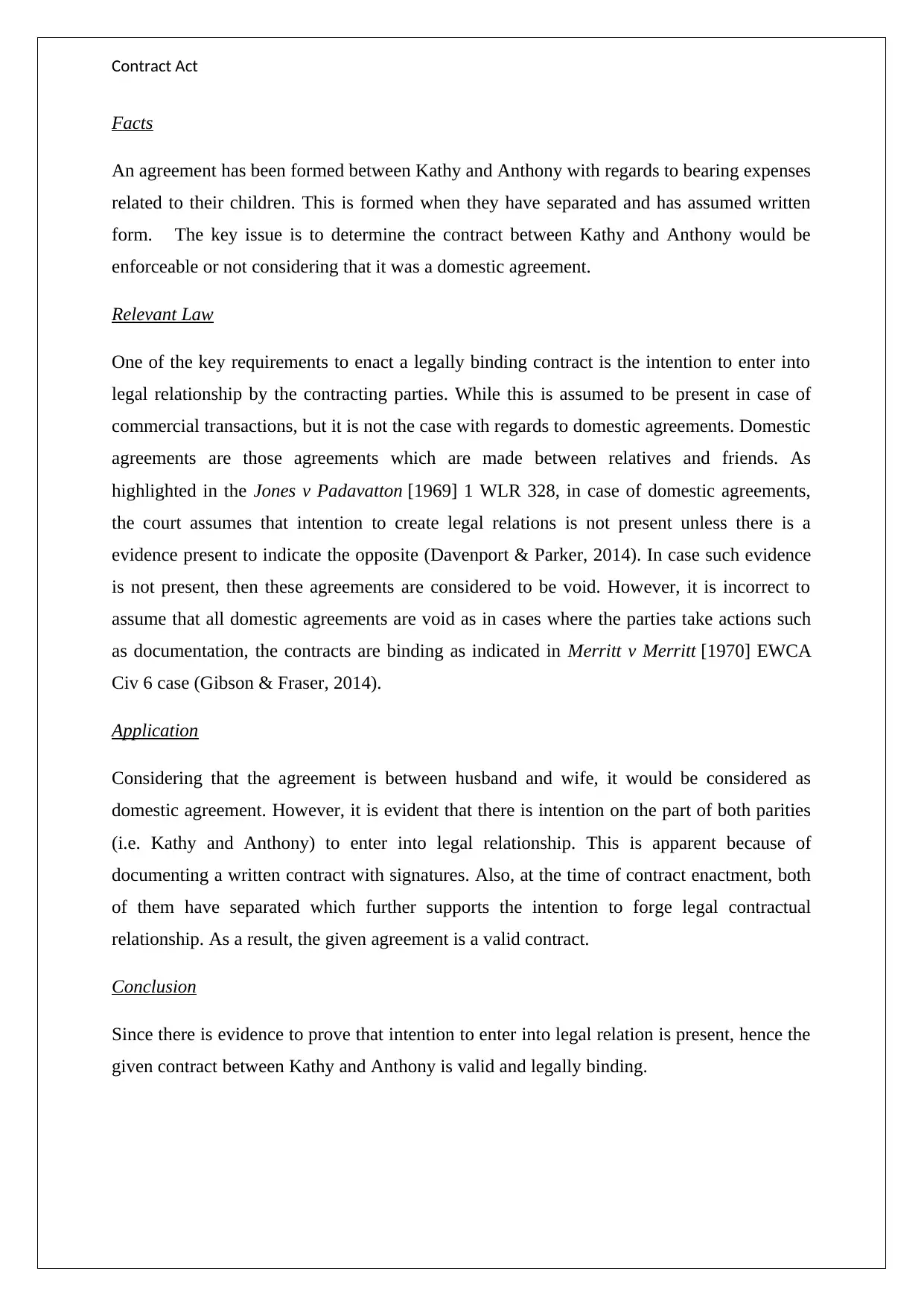Contract Law Case Study: Analyzing Domestic Agreements Enforceability
VerifiedAdded on 2023/04/17
|3
|363
|470
Case Study
AI Summary
This case study examines the enforceability of a domestic agreement between Kathy and Anthony, focusing on their written agreement regarding child-related expenses post-separation. The analysis centers on whether the agreement constitutes a legally binding contract, considering the principle that domestic agreements typically lack the intention to create legal relations unless proven otherwise. Referencing key cases like Jones v Padavatton and Merritt v Merritt, the study concludes that the documented and signed contract, made after separation, demonstrates a clear intention to establish a legal relationship, thus rendering the agreement valid and legally enforceable. Desklib provides access to similar solved assignments and past papers for students.
1 out of 3










![[object Object]](/_next/static/media/star-bottom.7253800d.svg)